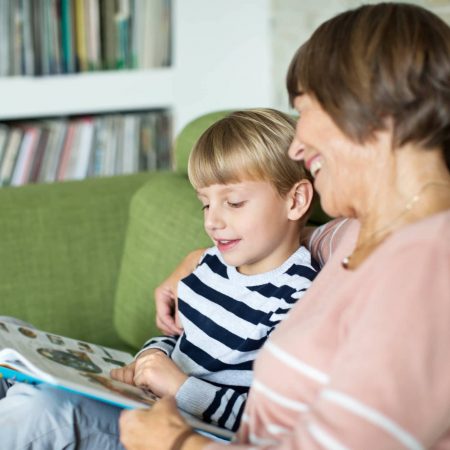To become skilled readers, children must have strong base in phonics, or an understanding of the sounds of printed letters and words. Children will use phonics when learning how to blend sounds together to read words. Since several areas of the brain must work together to “decode” or sound out words, children must practice this skill repeatedly. Your child will also use phonics to spell words when they write.

In 1st grade your child will start by being able to read CVC words (consonant-vowel-consonant words) like t-a-p, then move on to read words that start with bl, sl, and tr. They’ll learn that the letter “e” at the end of some words will be silent (gone, time). They’ll also master long vowel sounds such as ai, ee, oa. Your child will be sounding out and trying to read two-syllable words (like wagon) as well as words that don’t follow regular spelling rules (said, busy, tongue).


Often parents fall into the thinking that “The school will teach my child everything they need to know! I’ll leave it to them.” Although it may feel better to not carry this burden, the burden will be shifted onto your child. Teachers need you on their team, practicing reading skills at home, building your child’s confidence, and giving them the much needed practice all kids require to be strong readers.
If your child is just starting to read or still seems unsure, review the alphabet and letter sounds. Next, look at short CVC (consonant-vowel-consonant) words (top, cat, fog and so on) and have your child break them apart into their individual sounds. Then blend these sounds back together (/t/ /o/ /p/; top).
Talk or play games about letter sounds for fewer than 5 minutes a day. While driving, give your child some 2 letter words and 3 letter words to spell (like see, look, up, go). Keep the activities fun and light so kids can enjoy a quick challenge and get a boost of confidence from practicing one skill a day.
Remember, we want children to develop a love of reading, so focus on reading the books they enjoy over and over again. We don’t want to ever frustrate children with the “mechanics,” such as drilling letter sounds to the point of tears. The goal of reading is to understand the story; phonics will help kids sound out words quickly to comprehend what they read.
What sound does each letter make in this word on the cereal box? Research suggests that seeing print, saying the sounds, and hearing the sounds while pointing at the letter with a parent or teacher has the greatest impact on learning “phonemic awareness” or sounds.
Start by making sure your child knows every upper- and lowercase letter in the alphabet. Write down the letters they know and don’t know so you can keep track. Find the letters in natural settings, like on a poster at the movie theatre. Ask if your child can say the letter name and letter sound they see. “What is the name of this movie? What letter does it start with? The letter m, you’re right! I’m going to try to read the word: Mmmmmminions. Did you hear the mmmm sound?” Help them if they don’t know the answer. Children are naturally curious about the print they see all around them, so use it as a meaningful teachable moment.
Remind your child often that we’re learning letter sounds so that we can read everything around us. Tell them it’s similar to learning to ride a bike how in the beginning Mom might have had to remind them to push the pedals with their feet and balance on the seat, but eventually they were able to ride by themselves. Phonics is the practice so you can read on your own!
Use a stick to trace letters in dirt or sand. Tell your child easy three-letter words and see if they can sound them out, such as “pop”, “tag”, and “lug”.
Draw a simple ladder of two long lines and four rungs on a piece of paper. Using a red crayon write a short word like “sit” on the bottom rung.
Then ask your child to think of more words that rhyme with “sit” and write them on each rung, climbing up the ladder using a different color crayon for fun. See how high your ladder will reach!
pit
hit
bit
sit
Explain to your child that sometimes two letters will stand together to create one new sound. The “h brothers” join with other letters to make the sounds: sh, ch, th, wh and ph.
This can be confusing for kids, so make sure to write an example word and use gestures to help them remember the new letter combination.
ch: touch your chin making the “ch” sound
sh: make the “shushing” sound while holding your finger to your mouth
wh: bite into some white or wheat bread
ph: pretend to talk on your invisible phone
Practicing phonics can feel tedious, so it’s important to find ways to make it fun, simple and quick. Write three letters on a piece of scrap paper: for example b, n, and t. Have your child say each letter and its sound. Then ask, “What’s the LAST letter you hear in ‘run’?”. Make it a game by saying they get one point for each word they get right. See if they can earn five points.
1st graders will begin reading more complicated words that contain letter “blends”. A blend is when two letters come together to help words begin. Examples are: tr, sw, st , sp, sn, sm, sl, sc, pl, gr, fl, dr, cr, cl, br, and bl. Demonstrate this concept by blending together two flavors in a smoothie, like strawberry and banana.
1st graders are expected to learn the letter blends:
tr, sw, st , sp, sn, sm, sl, sc, pl, gr, fl, dr, cr, cl, br, and bl.
Give your child a piece of paper with one blend written on it. Have them say the sound the blend makes. Give your child a bag and give them five minutes to find objects that start with the blend on the paper. Give clues or suggestions to identify objects. When time is up review the objects and give a point for each item found. Have your child teach a neighbor or friend for the next round.
In the beginning it will be hard work for your child to “decode” or sound out the words they see in books for 1st graders. Make it fun by letting them record their voice when reading by using the “Voice Memos” app available on iPhones and Samsung phones.
Your child might want to read the same story every night. Try to stay excited about reading by being enthusiastic. Remember to point to words as you read and enunciate the different sounds in words. “The pirate ssshhhhip is setting sail!” Remind your kids that when you read your voice should sound natural, like when you’re talking to a friend.


Use phonics games to help build kids’ “decoding” or sounding out skills. This will make your child a stronger, faster and more fluent reader.

Home Reading Helper is a resource for parents to elevate children’s reading at home provided by Read Charlotte.